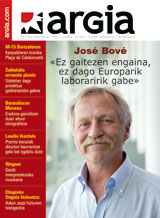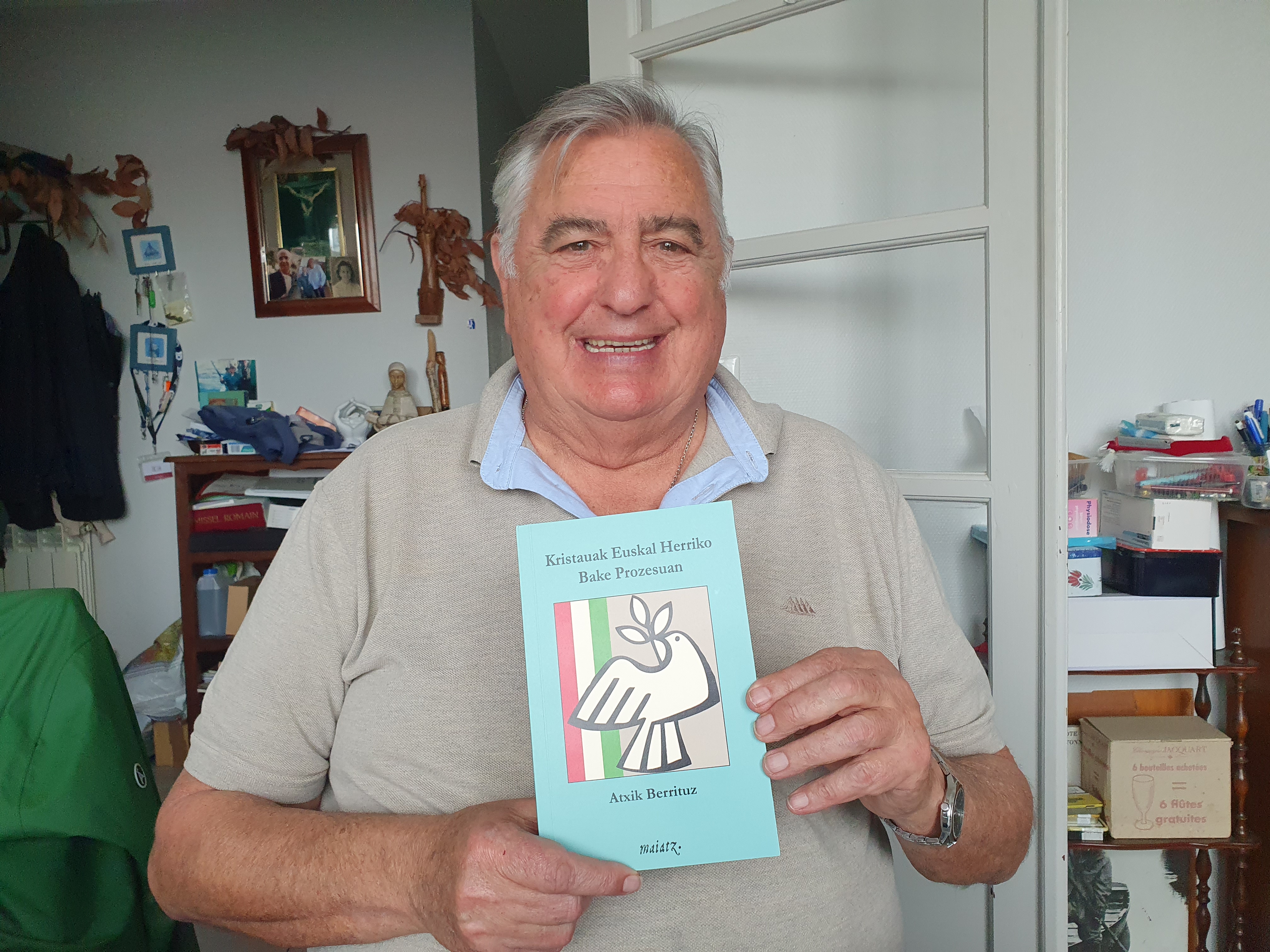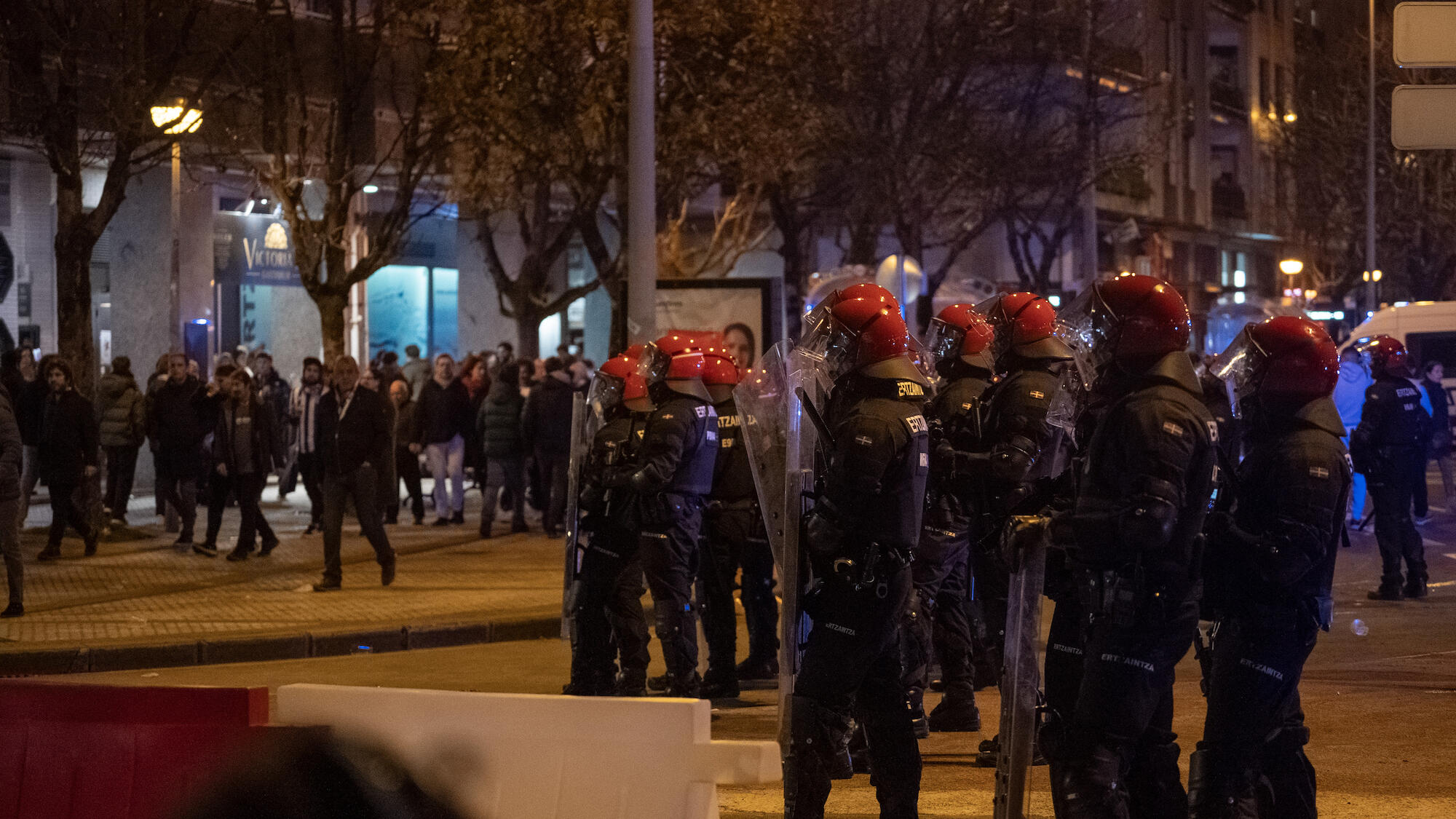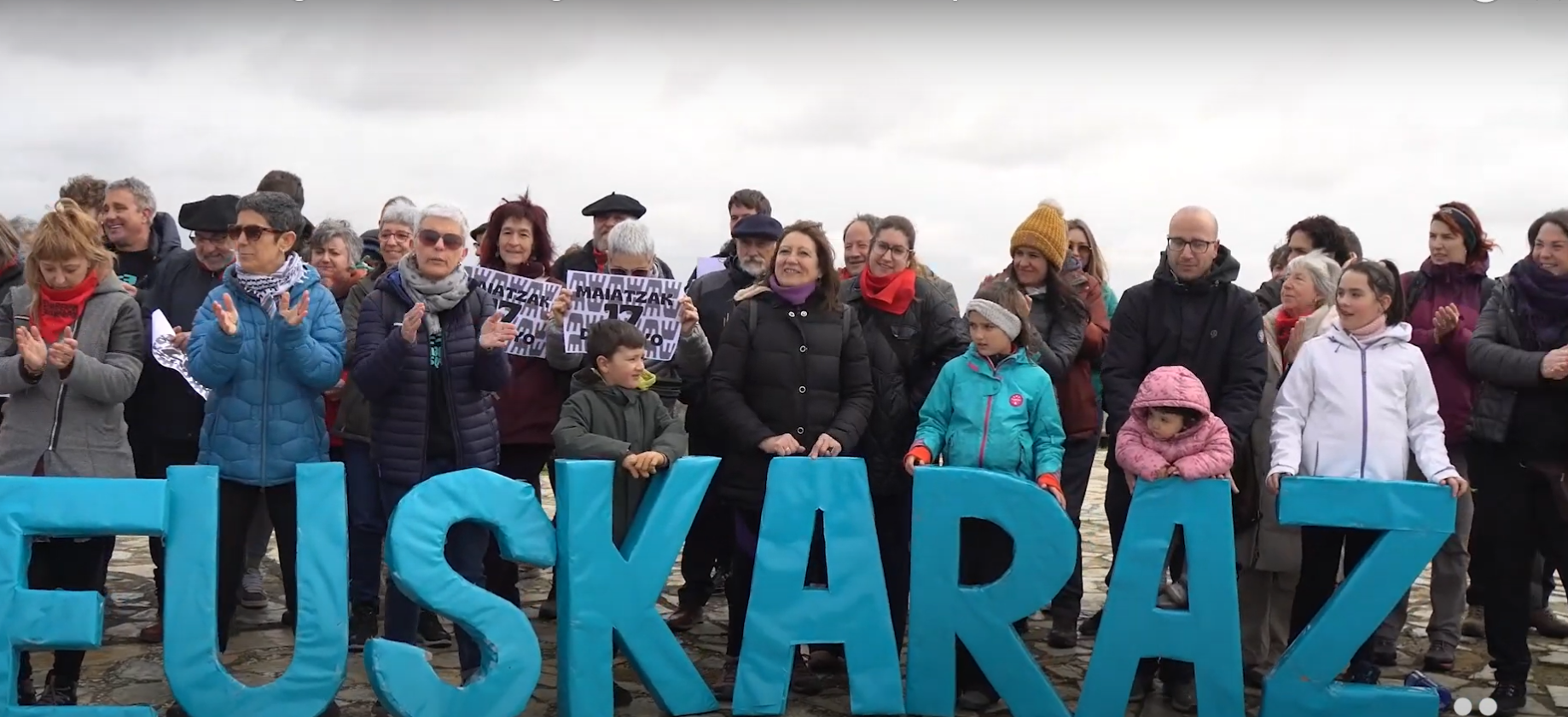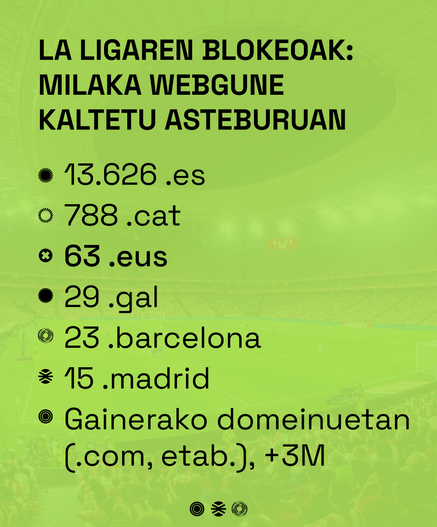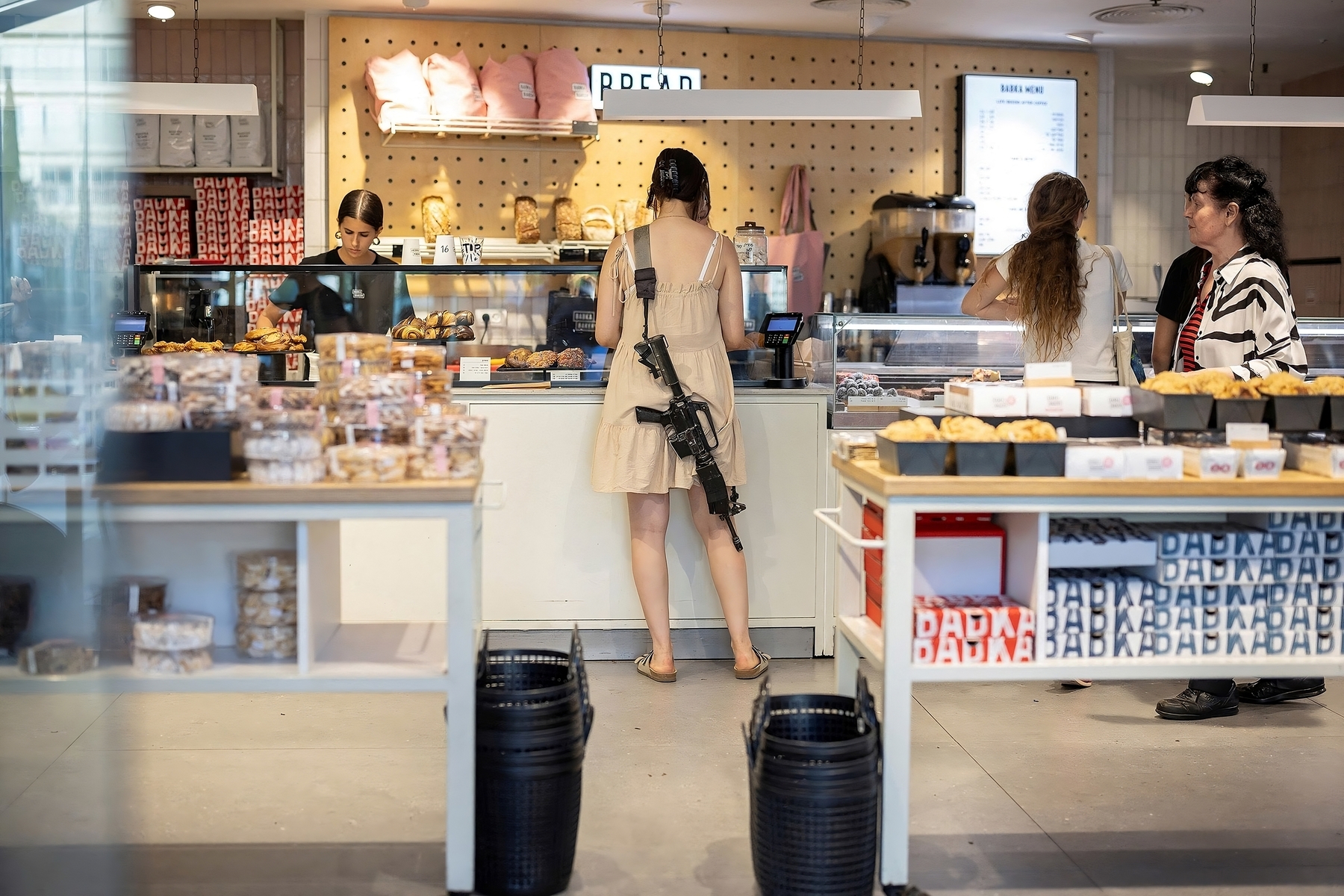Open Deposit of Oral Heritage
- This year marks the 20th anniversary of the death of Joxemiel Barandiarán and the museum that bears his name has just completed its first year. We approached Ataun to visit the building and quickly realized that the Barandiaran Museum transcends the building, which is much more extensive.
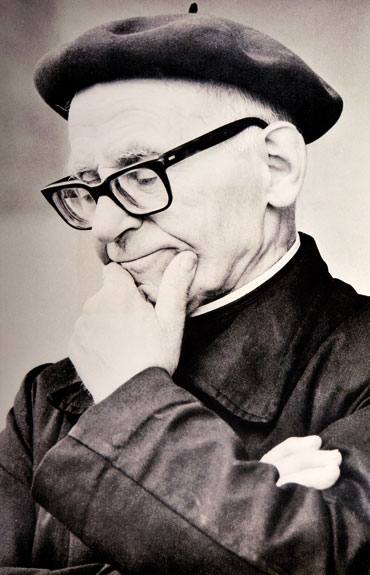
According to the legend, the citizens of Ataun were thinking of making the church, and the Mendiola supermarket, where the current cemetery is located, seemed to them the ideal place to do it. The stones began to be transported there by car, but the stones that had been raised during the day appeared in the morning in the place where the church of St. Martin is today. The next day the Christians would load the stones back in the car and take them to Mendiola, but at night, again and again, someone would take them to the same place. Not being able to resist the curiosity, the old woman of the Guard House next to him watched, and one day she saw that the stones were carried by the Gentiles at night. Even the Gentiles realized that the old woman had seen them and blasphemed her: “Aida zurie, aida gorre, watch that lady’s left eye.” The old woman lost her eye, and today St. Martin’s Gentile Church is where she wanted to be.
This is where the popular route that Barandiarán so loved begins, which leads us to San Gregorio and therefore to the museum. But before reaching the new museum there is the Peruenezar farmhouse. He was born there in Barandiara on the last day of 1889. And further on, without departing from the popular path, there is the Sara House. He died ten days before his 102nd birthday. At Joxemiel's request, the body was carried along this popular road to the cemetery of San Gregorio. And the new house of Barandiaran, the museum that was opened last year, is located between the Sara House and the cemetery, in the restored 16th century Larretza mill.
Almost 20 years ago, the intention to do something in his honor arose immediately after the death of Joxemiel. In the words of Bittor Oroz, Ataun’s acting mayor, “Barandiaran was very important for both the Basque Country and Ataun. Although he was part of the intellectual elite, he was deeply embedded in the village. It was essential to remember him and not to lose his contribution.” Since Ataun is a small town of economic means, the project has been brought together and embodied in the last two legislatures. Although they planned to build a new building between the neighborhoods of San Martín and San Gregorio, they thought it would be more convenient for visitors to take advantage of the other infrastructures to settle in one of the neighborhoods. Barandiaran was from San Gregorio and therefore it was ideal to do it in this neighborhood. The old grazing mill was there, between the Sara House and the cemetery and, by the way, the building would be recovered.
The contents of the museum were decided by the working group led by Jexux Altuna, an archaeologist who knew Barandiaran perfectly personally and professionally. They spent two years collecting information and four more years organizing the museum. The museum opened its doors a year ago, on June 12.
A full museum
In the atrium of the museum, the millstones welcome visitors and, at the door, the sun flowers. The visit begins on the top floor, under the wooden beams of the ceiling, with a visual of about 15 minutes. It summarizes the life and contribution of Barandiaran: his childhood in which Christianity and myths with pagan roots were mixed in a natural way; the times of the seminary; the discovery at the University of Leipzig, one of the founders of scientific psychology, of Professor Wilhem Wundt in the town of Joxemiel, a town with rare languages and cultures; the discovery of the first Aralar dolmend, based on the legends he had heard about; the immersion of Aralar in the Aranzeguradi, the New York Triennese and the “Wars,” and the forced Chairs, and the three.
We enter the adjoining room and face the library of Barandiaran. Not a collection of books he has collected, but a collection of works he has written: He published 575 works for 75 years. In addition, his diary, a digitized diary of eight volumes, is the subject of consultation. It is not a personal journal, but a manuscript with details of the investigations carried out. In the same room you can see the conversation recorded in the kitchen of the house at the age of 100. This corner has been dedicated to Barandiarán’s relationship with the Basque language, which in the conversation refers to the issues of starting in school and imposing the Spanish language. Father Barandiarán was fluent in five or six languages and it is true that, influenced by his habit at school, he wrote mostly in Spanish. But at certain times, for example, when the Civil War broke out, when he received his personal references in the newspaper, he used Basque. Finally, this section of the museum also contains information about the tributes that were made to him.
Excavate and listen
Father Barandiaran studied both oral and material remains, and the ground floor of the museum is a reflection of these two areas.
First there is a map of the Basque Country, a map with a few points on. The points indicate the sites that were excavated in Barandiara before the start of the archaeological work. If you press the button next to the map, the excavations by Joxemiel light up and the map is filled with red dots, mainly in Gipuzkoa and Norte. Below is a replica of a piece of the site with excavation tools to show how Barandiaran and the others operated. And the footprint is surrounded by photographs of the “three gloomy troglodytes”. According to Barandiaran himself, it could be said that they were troglodytes, because they operated in caves, but they were gloomy by no means. In the event of a blackout, they were saddened by the Civil War, since from 1936 Aranzadi, Barandiaran and Eguren would never work together again. He had other friends, such as Jexux Altuna.
Then, using tactile technology, it is possible to make a virtual flight from Aralar. That is, by moving our fingers on the screen we can visit the megaliths of Aralar flying while we receive explanations about them.
In the field of verbal traces, we can place headphones and listen to various legends collected by Joxemiel in the voice of Barandiaran himself. And then the visitor confirms that not only his museum but also Joxemiel used new technologies: There is a video he shot in 1928. There, a man appears in the foyer of the farm giving explanations about various magical activities. They think he might be Joxemiel's father and explain, among other things, what they were doing against the lightning.
Beyond the walls of leather
Next to the leather shop there is another building, the reception area. The reception service, the tourist office and the store have been prepared on the ground floor and, soon, on the upper floor, the Joxe Martin Shelving documentation center will be opened for those who want to deepen their work in Joxemiel.
On the other hand, behind the grass is the Windmill. The City Council decided to reform what was once a sawmill and mill. Today the visitor can see it in action again. In addition, there is also the possibility of listening to some of the stories collected by Barandiarán. The participation of the citizens in the mill has been fundamental, since a group of retirees from Ataun have committed themselves every fortnight, in the field, to clean the canal and start the mill.
Those who promoted the museum’s project were clear that it should not be limited to the four walls of the building. “In Ataun, the oral transmission has not been completely lost, which is a treasure that exists in very few places,” says Bittor Oroz. “Many ethnographic elements have also been preserved. In the houses you can see crosses and flowers of the sun made of white thorns. There are plenty of megaliths around... An exhibition point was necessary, but we did not want the visitor to lose these treasures of the area.” Thus, the museum has been prepared according to the concept of an extended museum and the visitors are directed to discover the area.
In addition to geographically, the museum aims to open itself to all types of audiences. It summarizes the life and work of Barandiaran, but there are those who know the information contained in it beforehand and that is why the documentation center will be expanded. In addition, they also want to reach the children and have prepared special workshops for them: Workshops for the elaboration of prehistoric tools that show how they made fire, sessions of storytellers... “Most kids today don’t know what Barandiaran was. In addition, until recently we have had a rich and special orality, tradition, non-material culture and this must also be transmitted to them, not only the figure of Joxemiel”, says the mayor of Ataun for the last eight years.
“We will never be able to pay Josh for everything he did. We’ll never realize how important what he did was to us,” says Oroz. “The brutal globalization we have today threatens to standardize our culture. And if we had come this far without anyone receiving that legacy, we would have had trouble highlighting our identity.” And he adds that the museum’s mission is not only to provide pure information, but also to instill feelings.
From the museum we went to the cemetery of San Gregorio, where Joxemiel and Pilar Barandiarán, his nephew who accompanied him from the exile of Sara until his death, are buried. And we've completed the triangle by going back to Sara's house. To finish, we walk along the road from the porch of Casa Sara, apple trees on the left and right. Once, after a perfect Latin exam, the young Joxemiel returned home proudly. To appease his son’s arrogance, his mother took him to the farm gate. There were also apple trees in front of the gate of the Peruenezar, two apple trees whose branches were inclined by the weight of the fruits. Then his mother told him about the horns: “The fuller, the lower.”
Despite the physical abandonment of the Barandiaran Museum and its house, the house that Barandiaran, always humble, filled with content, extends beyond the municipality, beyond the church built by the Gentiles wherever they wanted, to all the red lights that light up on the map that we have just seen, until reaching all the corners where he searched for legends.
Museoaren aurkezpen ekitaldietako batean Jexux Altunak esan zuen Barandiaranek, arkeologian lan izugarria eginagatik, arlo horretan bere lanak ez duela hainbesteko garrantzirik. Aztarna materialak, berak aurkitu edo induskatu ez balitu beste norbaitek egingo zukeela, gero ere han egongo zirela, alegia. Altunaren ustez, Barandiaranen garrantzia ahozko ondarea bildu eta gorde izana da.
XIX. mendean euskal mito eta kondairak galtzen hasiak ziren. XX.eko bizimoduak ia erabat desagerraraziko zituen eta, Aita Barandiaranek Wundten gomendioari jarraitzea erabaki arte, ondare hura ez zegoen inon jasoa. Museoko ikus-entzunezkoak dioen moduan, “handik gutxira inork ez zion Ilargiari Ama deituko”. Euskal kultura erasotzen eta ukatzen zen garaian, ahoz transmititutako ondareak zeukan garrantziaz konturatzeko gai izan zen. Bere kezka nagusia ez zen bildutakoa interpretatzea, horren inguruan teoriak sortzea; desagertu baino lehen biltzea zen lehentasuna. Antzinako euskal kultura, ordura arte soilik ahoz transmititu zena, jaso eta ondorengo belaunaldien esku utzi zuen, azter zezaten.
Eta, gainera, bilketa lan erabat sistematikoa eta zehatza burutu zuen. Esandakoa hitzez hitz transkribatzen zuen, eta ahalik eta informazio zabal eta zehatzena lortzeko prestatu zuen galdetegia gaur egun berak sortutako Etniker taldeak erabiltzen du oraindik.
Esamolde ezagun batek dio herri indigena bateko zahar bat hiltzen den bakoitzean liburutegi bat desagertzen dela. Bada, Joxemiel Barandiaranek herri honen sustraiak eta mitoak heriotzatik erreskatatu eta liburutegi bihurtu zituen.
You may not know who Donald Berwick is, or why I mention him in the title of the article. The same is true, it is evident, for most of those who are participating in the current Health Pact. They don’t know what Berwick’s Triple Objective is, much less the Quadruple... [+]
The article La motosierra puede ser tentadora, written in recent days by the lawyer Larraitz Ugarte, has played an important role in a wide sector. It puts on the table some common situations within the public administration, including inefficiency, lack of responsibility and... [+]
Is it important to use a language correctly? To what extent is it so necessary to master grammar or to have a broad vocabulary? I’ve always heard the importance of language, but after thinking about it, I came to a conclusion. Thinking often involves this; reaching some... [+]
The other day I went to a place I hadn’t visited in a long time and I liked it so much. While I was there, I felt at ease and thought: this is my favorite place. Amulet, amulet, amulet; the word turns and turns on the way home. Curiosity led me to look for it in Elhuyar and it... [+]
Adolescents and young people, throughout their academic career, will receive guidance on everything and the profession for studies that will help them more than once. They should be offered guidance, as they are often full of doubts whenever they need to make important... [+]
Atxik Berrituz giristino taldeak Kristauak Euskal Herriko bake prozesuan liburua argitaratu du Maiatz argitaletxearekin. Giristinoek euskal bake prozesuan zer nolako engaiamendua ukan duten irakur daiteke, lekukotasunen bidez.
Maiatzaren 17an Erriberako lehenengo Euskararen Eguna eginen da Arguedasen, sortu berri den eta eskualdeko hamaika elkarte eta eragile biltzen dituen Erriberan Euskaraz sareak antolatuta









